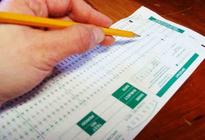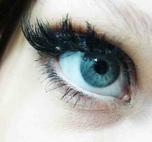 | ||||
Mendelian Genetics & Heredity
Practice Test Questions I
from Science Prof Online
Free review questions to help students better understand
Genetics & Heredity.
Genetics & Heredity Sample Test Qus - Part 1
 | ||||||
SPO VIRTUAL CLASSROOMS
1. What is the expected genotype ratio of the F1 generation?
a. 1 : 2 : 1 b. 3 : 1 :1 c. 1 : 1 : 1
d. 1 : 3 : 2 e: 1 : 4
2. What is the expected phenotype ratio of the F1 generation?
a. 1 : 2 : 1 b. 3 : 1 c. 2 : 2
d. 1 : 3 : 1 e: 1 : 1 : 1
3. Incomplete Dominance: Sponge Bob’s pet snail Gary has a pink shell. Shell color of cartoon snails operates on the principle of incomplete dominance, with (R) representing the allele for red shell and (r) representing the allele for white shell. Gary’s dad has a red shell and Gary’s mom has a white shell.
a. What is Gary’s dad’s genotype?
a. Rr b. rr c. RR d. could be RR or Rr
e. not possible to determine
Complete Dominance: In cartoon sponges, “square pants” (P) is dominant and “no pants” (p) is recessive. Sponge Bob is homozygous for “square pants”. If he has children with a “no pants” lady sponge, what are the possible genotypes and phenotypes of their little sponge offspring? Please answer the questions below.
Please complete a Punnett Square of the cross between Sponge Bob and his lady for the trait of “pants”, and then answer the following questions:
The following questions, from the Virtual Biology Classroom, are designed to help students better understand this topic. All questions are based on material that can be found on the Mendelian Genetics & Heredity Lecture Main Page.
SCIENCE PHOTOS
Page last updated 2/2016
 | ||||
Science Prof Online
has several
Virtual Classrooms
including:
(15 weeks)
(8 weeks)
(8-weeks)
(16 weeks)
You have FREE access to a large collection of materials used in a college-level introductory biology course. The Virtual Biology Classroom provides a wide range of free educational resources including PowerPoint Lectures, Study Guides, Review Questions & Practice Test Questions.
4. At the Crusty Crab, Squidward is flipping a coin three times to determine who gets to work the cash register. Sponge Bob chose heads, and Squidward tails. So far, Squidward has flipped one “head” and one “tail”. What is the probability that the third flip will come up “heads”?
a. 25% b. 50% c. 75% d. 100%
5. A cross involving a single trait is called:
a. diploid cross b.homozygous
c. monohybrid cross d. an autosome
6. The above Question #9 refers to which of Mendel's Laws?
a. Law of Segregation
b. Law of Dominance
c. Law of Independent Assorment
d. Murphy's Law
7. If you have 12 children, all girls and you find out that you are expecting another child, based on the possible sex chromosomes that can be contributed by the mother and father (not based on environmental factors) what is the probability that the next child will be a boy?
a. 25% b. 33% c. 50%
d. 75% e. 100%
Click here for more Mendelian Genetics & Heredity
practice test questions.
b. What is Gary’s mom’s genotype?
a. Rr b. rr c. RR d. could be RR or Rr
e. not possible to determine
If Gary has offspring with another pink shell snail, what are the expected genotypes and phenotypes? Answer the two questions below.
c. What is the expected genotype ratio of the F1 generation?
a. 1 : 1 : 2 b. 3 : 1 c. 2 : 2
d. 1 : 2 : 1 e: 1 : 3 : 1
d. What is the expected phenotype ratio of the F1 generation?
a. 1 : 1 : 2 b. 3 : 1 c. 2 : 2
d. 1 : 2 : 1 e: 1 : 3 : 1






